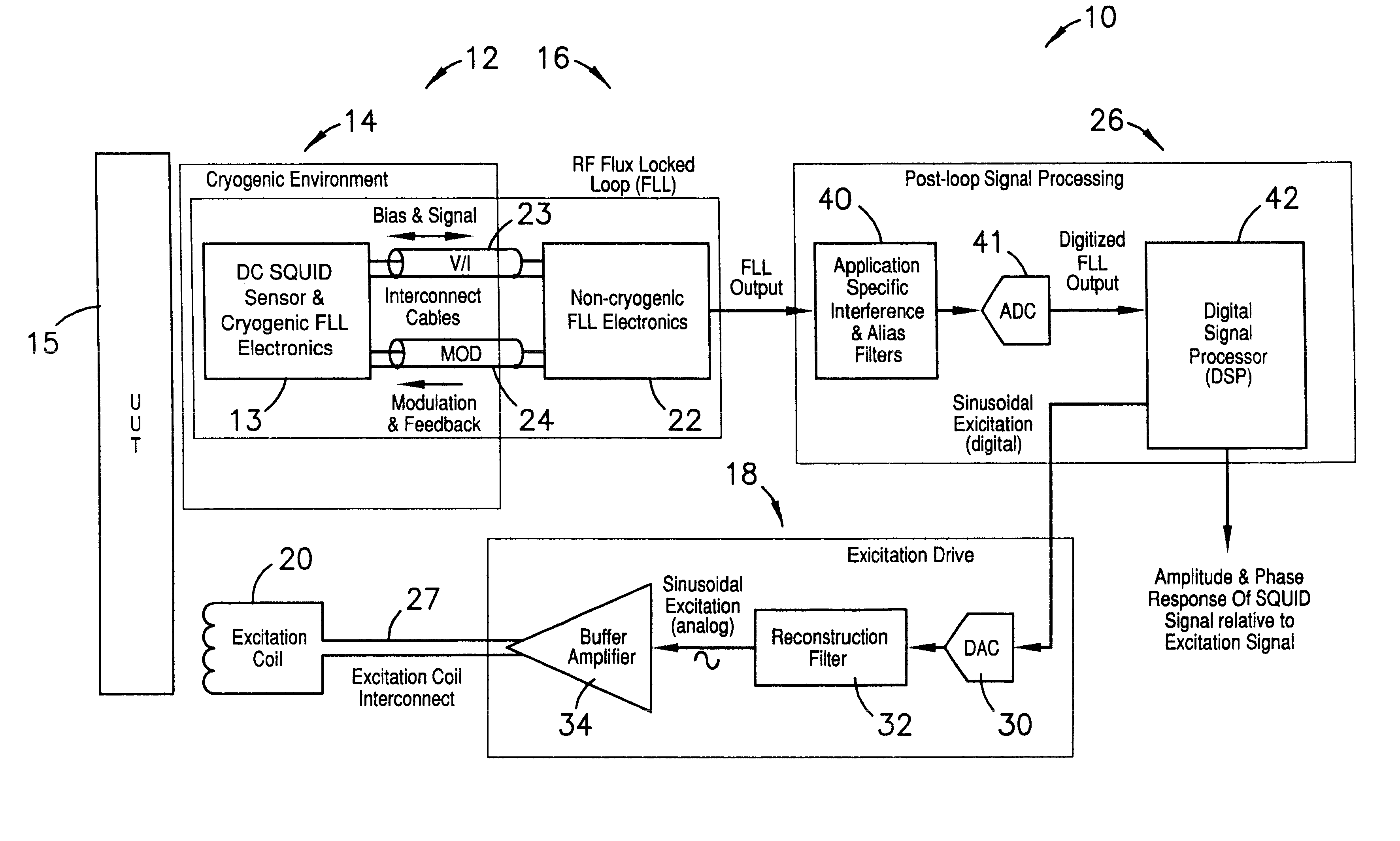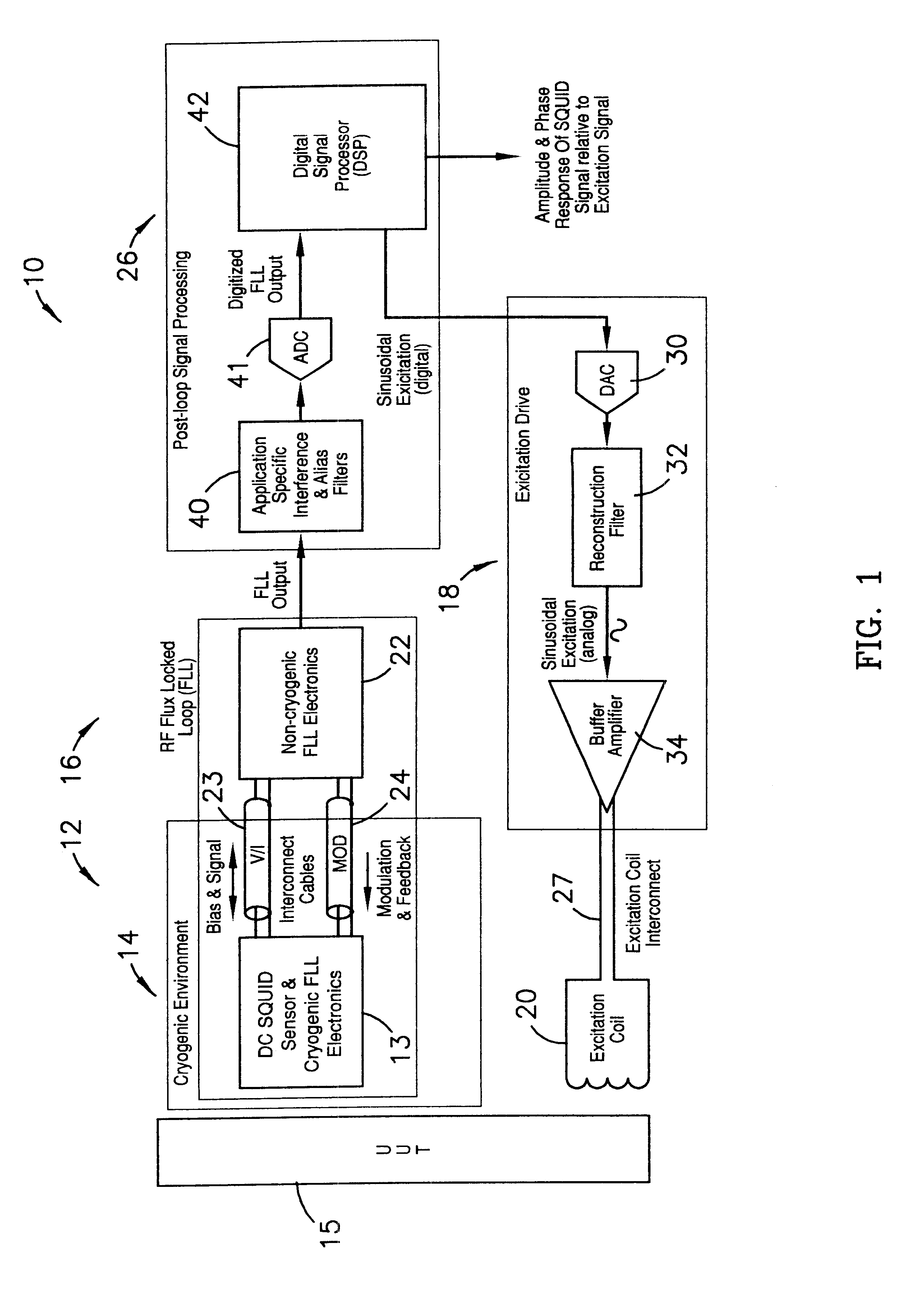Read-out electronics for DC squid magnetic measurements
a technology of dc squid and magnetic measurement, applied in the direction of magnetic measurement, magnetic field measurement using superconductive devices, instruments, etc., can solve the problems of fll losing lock, invalidating any measurement in progress, and not being practicable in a field setting for dc squid sensor systems for non-destructive testing/evaluation of materials or structures
- Summary
- Abstract
- Description
- Claims
- Application Information
AI Technical Summary
Problems solved by technology
Method used
Image
Examples
Embodiment Construction
, below.
A preferred embodiment of the present invention is described in detail below with reference to the attached drawing figures, wherein:
FIG. 1 is a block diagram illustrating a first preferred embodiment of the major components of the read-out electronics of the present invention.
FIG. 2 is a block diagram illustrating a second preferred embodiment of the major components of the read-out electronics of the present invention.
FIG. 3 is a block diagram illustrating a preferred embodiment of the flux locked loop component of the present invention.
FIG. 4 is a circuit diagram illustrating a preferred embodiment of the sharpener circuit of the present invention.
FIG. 5 is block diagram illustrating a first preferred embodiment of the digital signal processing component of the present invention.
FIG. 6 is a block diagram illustrating a second preferred embodiment of the digital signal processing component of the present invention.
Referring to FIGS. 1 and 2, a DC SQUID magnetic measurement...
PUM
 Login to View More
Login to View More Abstract
Description
Claims
Application Information
 Login to View More
Login to View More - R&D
- Intellectual Property
- Life Sciences
- Materials
- Tech Scout
- Unparalleled Data Quality
- Higher Quality Content
- 60% Fewer Hallucinations
Browse by: Latest US Patents, China's latest patents, Technical Efficacy Thesaurus, Application Domain, Technology Topic, Popular Technical Reports.
© 2025 PatSnap. All rights reserved.Legal|Privacy policy|Modern Slavery Act Transparency Statement|Sitemap|About US| Contact US: help@patsnap.com



